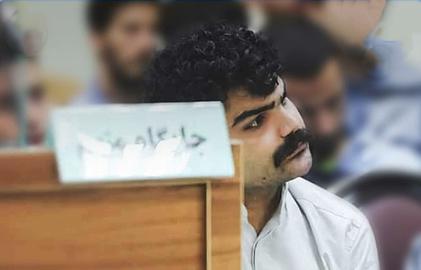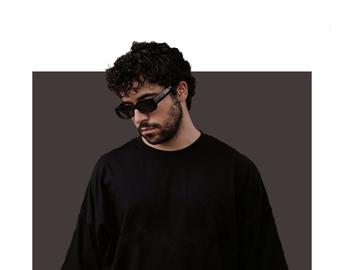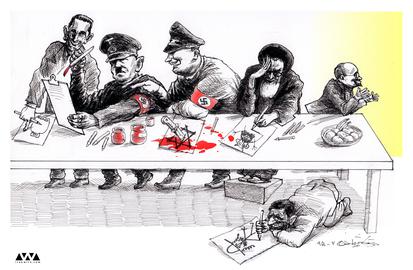Holocaust Memorial Day takes place on 27 January each year. It’s a time to remember six-million Jewish people and millions of other people who were killed by the Nazi regime and its allies. For this reason, we are re-publishing a number of articles on Iran and the Holocaust on IranWire. This article was originally published in May 2016.
...
On May 14, Iran's House of Cartoon will hold its second Holocaust Cartoons Exhibition in Tehran. The House of Cartoon's president, Massoud Shojai Tabatabai, is a controversial figure in Iran. Some call him “lovable,” while others describe him as “intimidating” and “threatening.”
Shojai and his close friend Hossein Niroomand started their cartoon work in the late 1980s and early 1990s for Kayhan Caricature, a publication belonging to the conservative Kayhan Institute, which operates under the supervision of Iranian Supreme Leader Ayatollah Ali Khamenei. The two men have alternated as managing editor and editor-in-chief of Kayhan Caricature. Shojai has since been appointed “president-for-life” of the House of Cartoon.
According to many Iranian cartoonists, both men owe their positions to their connections with Iran’s conservative security, political and ideological organizations.
Niroomand is a member of the board of directors of Tehran Municipality’s Cultural and Artistic Organization. Under President Mahmoud Ahmadinejad, he was the cultural advisor to the Minister of Islamic Culture and Guidance.
Nikahang Kowsar, a founding member of the House of Cartoon, tells IranWire that Shojai has always been in contact with the Revolutionary Guards’ Intelligence Unit and other security officials such as Kayhan editor Hossein Shariatmadari, former Culture Minister Mohammad-Hossein Saffar-Harandi, and former Evin Prison interrogator Hassan Shayanfar, who now works for Kayhan. The government has changed hands three times since the two men took up their roles, but their positions have always been safe.
“Agents of Suppression”
Shojai and Niroomand play a "security" role in Iran's cartooning scene. Mana Neyestani, a cartoonist who now lives outside Iran and contributes to IranWire, says that at politically sensitive moments in Iran, such as the aftermath of the disputed 2009 presidential elections, the men have acted as “agents of suppression and prevention.”
When some cartoonists planned to boycott a government-backed publication called Biennial Cartoon, Shojai and Niroomand threatened them and warned them “not to give aid and comfort to the enemy.”
Neyestani also says Shojai and Niroomand control and supervise the activities of Iranian cartoonists inside the country, as well as their communications with the outside world.
Another Iranian cartoonist, Kianoush Ramezani, says the two men influence the degree of political pressure that cartoonists face inside Iran.
Exiled cartoonist Shahrokh Heydari agrees. “When they can save a cartoonist in Arak from flogging,” he says, referring to the case of Mahmoud Shokraye, a cartoonist accused of insulting MP Ahmad Lotfi Ashtiani, “they can surely punish another cartoonist if they want to.”
Several cartoonists inside Iran told IranWire that Shojai and Niroomand have threatened them over the phone or by text message.
Heydari, who has received threats himself, says that any cartoonist who resists the two men’s power over the Iranian cartooning scene "will be pushed out, as happened to Kianoush Ramezani.”
Ramezani, who fled Iran for France following the 2009 crackdown on post-election protests, says he had his first run-in with Shojai after he appealed to cartoonists in other countries to help after an earthquake devastated the ancient city of Bam in 2003. Shojai ordered Ramezani to cut all contact with foreign cartoonists or, he said, “I will put an end to all your activities and send your case to the judiciary.”
“You are Mercenaries and Clowns”
Shojai made one of his latest and clearest attacks against a cartoonist outside Iran when Neyestani held a cartoon competition on the Facebook page Close Up of Iranian Women.
In online postings and private messages, Shojai accused Neyestani, Heydari, and Ramezani of being “mercenaries” and “clowns” who sell their country to foreigners for dollars. Although the comments were removed a few days later, Neyestani and Ramezani have provided IranWire with screenshots.
Neyestani says that besides keeping tabs on Iranian cartoonists, Shojai and Niroomand have tried to prevent cartoonists from forming their own professional association. “Whenever we wanted to launch an association for cartoonists, they blocked it,” Kowsar says. “In their extreme selfishness, they would not allow anybody else to enter the arena.”
But the two men’s role is not only about "security" and snooping. According to several cartoonists, Niroomand and Shojai have changed the culture of cartooning in Iran, pushing it away from social and political criticism and towards “neutral” and “vulgar” subjects. “They have leashed political cartoons and have defanged them,” Neyestani says. “If anyone attempted to draw cartoons criticizing the system, the laws and cumbersome traditions in Iran, these two worked to prevent it.”
Shojai is most unlikely ever to leave his role. In 2015, a group of cartoonists objected to his “presidency for life" at the House of Cartoon, and Tehran Municipality’s Cultural and Artistic Organization briefly appeared to have removed him from his position. But within a few days, the Fars and Nasim news agencies removed the news from their sites. Then Raja News reported that the same organization had appointed Shojai as the head of the “Islamic Revolution’s House of Cartoons.” Until then, nobody had even heard of such an entity. Officials of the Cultural and Artistic Organization announced that as far as they are concerned, Shojai was and had always been the president of the House of Cartoon. So ended Shojai’s very short absence.
An Islamic cleric, Shahab Moradi, has been president of Tehran Municipality’s Cultural and Artistic Organization since 2013. Moradi is closely affiliated with the Owj Media and Artistic Institute, which co-sponsors Iran’s Holocaust Cartoon Exhibition.
From “Exceptional” to “Secondhand”
While Shojai is an unpopular figure with many cartoonists these days, some remember him playing a positive role though his work at Kayhan Caricature. “At the House of Cartoon, Shojai helped many cartoonists to grow,” Heydari says. “However, it looked like he was training followers for himself.”
Kayhan Caricature once existed outside political factions and groups, Neystani recalls. But after high-profile student protests in 1997, the publication became a propaganda tool for the Kayhan Institute. After those events, Shojai and Niroomand “bared their swords and their political orientation became more and more visible.”
Cartoonist Touka Neyestani, Mana’s brother, told IranWire that Shojai was a brilliant and “exceptional” cartoonist who later reduced himself to “a secondhand manager” and “a tool.” At a time when there were no independent publications and independent cartoonists had no outlets, he says, Shojai contacted Iranian cartoonists and invited them to work with him. “It was the first time that somebody with a religious appearance accepted me as a colleague and asked no questions about my political leanings.”
Touka Neyestani says cartoons and the House of Cartoon are not highly regarded by Iranian cultural authorities, and that if Shojai was removed, the House of Cartoon would likely be shut down. In fact, he says this is bound to happen sooner or later.
He also says the leadership of the House of Cartoons will make little difference in the professional lives of Iranian Cartoonists, since they cannot provide an appealing working environment. “These two were able to publish Kayhan Caricature and be its managing editor and editor-in-chief for years because of their political connections,” says Touka Neyestani. “Holding the cartoon biennial exhibition in Iran would be impossible without connections to people who can make political decisions.”
Touka Neyestani describes the Holocaust Cartoons Exhibition a “big mistake” that “will haunt Shojai for the rest of his life.”
He says professional cartoonists should not participate in the competition because of its name alone, if nothing else.
visit the accountability section
In this section of Iran Wire, you can contact the officials and launch your campaign for various problems































comments